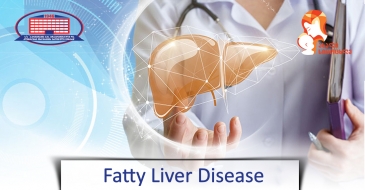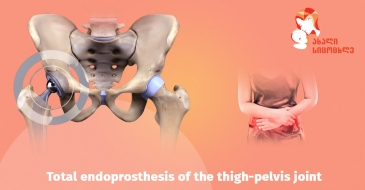Esophageal varices are enlarged veins in the esophagus, particularly in the lower third of the esophagus.
The most common cause of esophageal varices is liver diseases (hepatitis, cirrhosis). Also, the cause of aforesaid pathology might be spleen or cardiovascular diseases and traumas.
The disease might develop at any age. According to statistics, this pathology is more common in men. The underlying cause might be immediate pathologic processes in the liver, as well as other diseases, during which the pressure is put on portal vein (portal vein is a large-caliber blood vessel that carries blood from digestive system to liver).
Surgeon-endoscopist of the clinic “New Life” of National Center of Surgery, Irakli Paichadze, discusses the topic.
– Mr. Irakli, What kind of pathology is the esophageal varices, and what changes proceed in the organism?
– The blood flow to the liver is allocated to the esophageal veins due to obstructions in the liver. Esophageal veins carry blood in high pressure that was meant for liver, and that’s why it causes vein enlargement. The blood flow starts to retain in the liver, increasing pressure within the hepatic vein (portal vein). This pressure (portal hypertension) forces the blood to seek alternate pathways through smaller veins, such as those in the lower part of the esophagus, anterior abdominal wall (so-called head of medusa), and rectum (hemorrhoids). Esophageal veins enlarge after a large amount of blood flow.
– How to recognize the symptoms?
– Unfortunately, in most cases, esophageal varices proceed asymptomatically, and the patient detects the pathology only in case of a bleeding complication. Bleeding is the only but threatening complication of the varicose veins. Walls of veins burst and start bleeding because of the pressure.
The following symptoms characterize a complication of the condition:
- Vomiting blood;
- Dark, liquid stools;
- General weakness;
- Cold sweat;
- Drop in blood pressure, etc.
In case the symptoms mentioned above are detected, the patient needs emergency inpatient treatment and should immediately seek medical establishment.
– What kind of studies are established in the clinic for diagnosing esophageal varices?
– The primary method for diagnosing esophageal varices is endoscopic (oesophagogastroduodenoscopy) examination. First, it’s necessary to localize varicose veins, particularly in which third of the esophagus is it located. There are rare cases when varicose veins are detected even in the cardiac region of the stomach. It’s necessary to asses the grade of varicose veins.
– According to the international classification, there are 3 grades of pathology. Could you explain them?
– Yes, there are 3 grades:
- Grade I –When varicose veins appear to be very small in the whole lumen, which has less clinical significance;
- Grade II– When varicose veins occupy around one-third of the esophageal lumen;
- Grade III– When varicose veins occupy more than one-third of the esophageal lumen.
– How is the esophageal varices treated in the clinic?
– It’s treated with the endoscopic method. After diagnosis and adequate assessment of the condition, it’s feasible to carry out endoscopic variceal ligation or sclerosing (sclerotherapy) on the esophageal varices.
Sclerosing is carried out only in the case of Grade I esophageal varices. During this endoscopic manipulation, injection is used on peripheral of the vein- alcohol is injected with a special needle, and it causes necrosis of the enlarged area of the vein.
Endoscopic variceal ligation is carried out in the case of grade II and III esophageal varices. In this case, the most enlarged vein is ligated by an elastic ring that prevents bleeding. After some time, the area of the vein under the ring self-removes and does not present a threat. It’s better if the ligation is performed promptly, because the disease management during bleeding is more complicated for the doctor, albeit, there are solutions for this problem as well.
Treatment tactic of varicose veins changes in case of bleeding. First of all, it’s necessary to place Blakemore tube, make up for the loss of blood, carry out respective emergency treatment, and ensure hemodynamic stability as much as possible and on the following day, perform endoscopic variceal ligation.
Endoscopic variceal ligation isn’t a comprehensive course of treatment as it treats only the result and not the cause.
We carry out esophageal varices management on emergency basis, as well as routine ones.
Nowadays, endoscopy has numerous capabilities. It plays the primary role in the diagnostic and treatment of the gastrointestinal tract.
In the clinic, it's feasible to perform following endoscopic manipulations:
- Stopping the bleeding;
- Ligation of esophageal varices;
- Cardiac dilatationduring cardiospasms (cardiac achalasia);
- Extraction of swallowed foreign objects;
- Removal of polyps and small cancerous masses – polypectomy, argonoplasmic ablation in case of Barrett's esophagus;
- Placement of stomach balloon for weight loss;
- Microinvasive interventions in the bile duct (in case of choledocholithiasis)
- Stenting, etc.
Wish you health!









